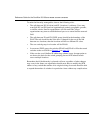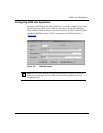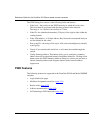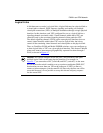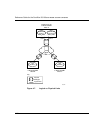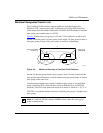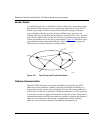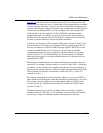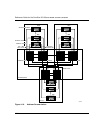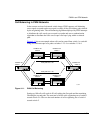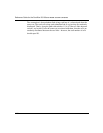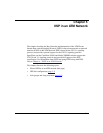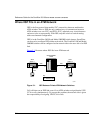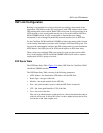
Reference Guide for the Centillion 50/100 and Model 5000BH Switches
4-22
893-01006-C
Border Nodes
As explained previously, a collection of nodes (switches) for a peer group appears
from outside of the peer group to be a single node, referred to as a logical node.
Within a peer group, all nodes are peers and see the full topology of the peer
group. Neighbors that discover they belong to different peer groups do not
exchange topology information and automatically become border nodes. A border
node can be a logical node or a physical device in a specified peer group that has
at least one link that crosses the peer group boundary. Figure 4-9
illustrates a peer
group with five border nodes (the black dots). Links that cross peer groups are
called outside links that continue to exchange hellos.
Figure 4-9. Peer Group with Five Border Nodes
Address Summarization
Generally, PNNI advertises end system reachability using prefixes on ATM
addresses to form summaries, making it possible to advertise reachability to a
large number of end systems using a single prefix. If an end system attached to a
node does not fit into one of the node’s configured summaries, it will be necessary
for the node to make an explicit advertisement for that end system. Using address
summarization makes the PNNI network more scalable by reducing the number of
addresses it must advertise. By properly configuring the internal summary
addresses, you can keep the amount of reachability information low.
8260EA





